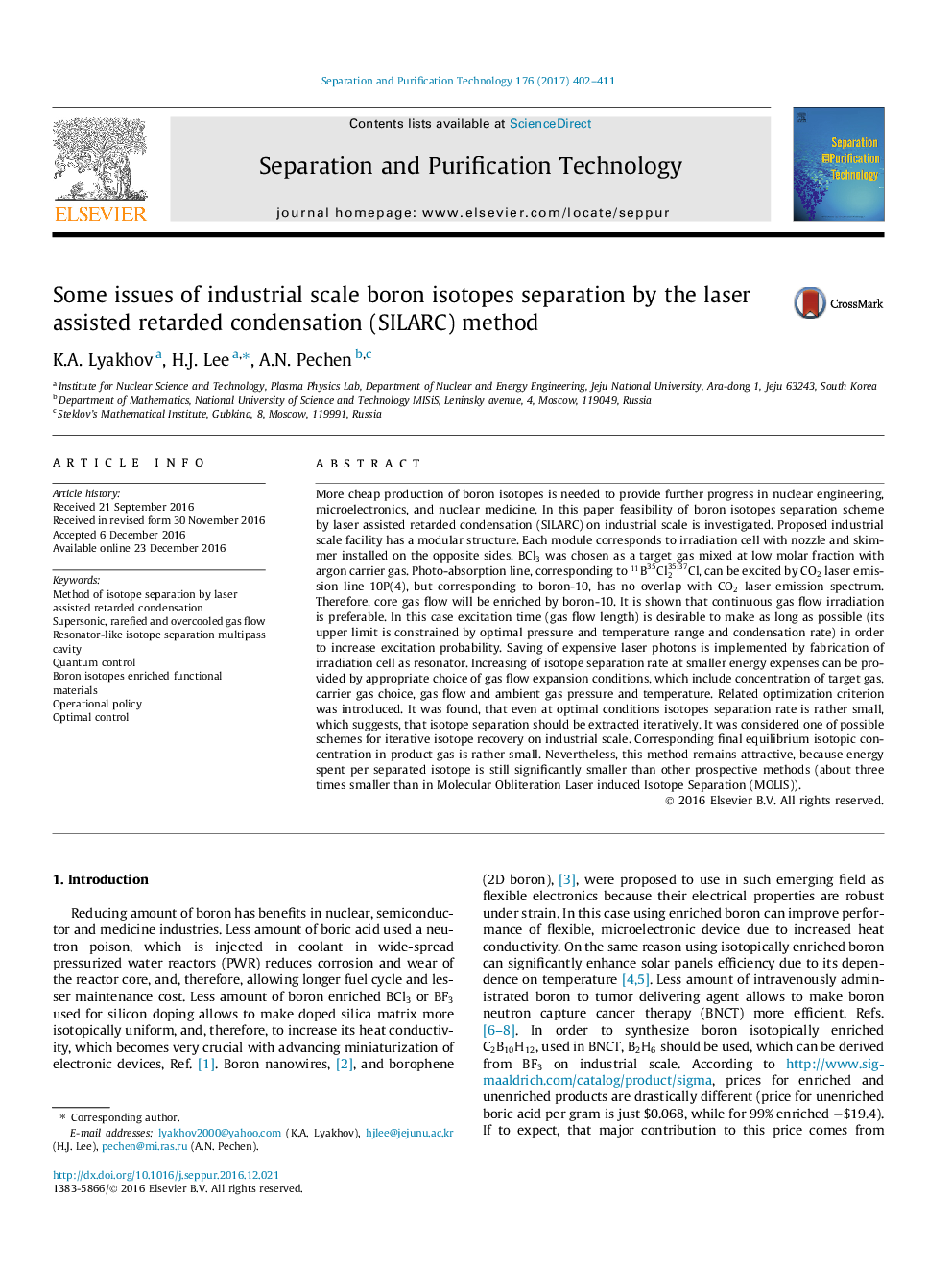| Article ID | Journal | Published Year | Pages | File Type |
|---|---|---|---|---|
| 4990260 | Separation and Purification Technology | 2017 | 10 Pages |
Abstract
More cheap production of boron isotopes is needed to provide further progress in nuclear engineering, microelectronics, and nuclear medicine. In this paper feasibility of boron isotopes separation scheme by laser assisted retarded condensation (SILARC) on industrial scale is investigated. Proposed industrial scale facility has a modular structure. Each module corresponds to irradiation cell with nozzle and skimmer installed on the opposite sides. BCl3 was chosen as a target gas mixed at low molar fraction with argon carrier gas. Photo-absorption line, corresponding to 11B35Cl235;37Cl, can be excited by CO2 laser emission line 10P(4), but corresponding to boron-10, has no overlap with CO2 laser emission spectrum. Therefore, core gas flow will be enriched by boron-10. It is shown that continuous gas flow irradiation is preferable. In this case excitation time (gas flow length) is desirable to make as long as possible (its upper limit is constrained by optimal pressure and temperature range and condensation rate) in order to increase excitation probability. Saving of expensive laser photons is implemented by fabrication of irradiation cell as resonator. Increasing of isotope separation rate at smaller energy expenses can be provided by appropriate choice of gas flow expansion conditions, which include concentration of target gas, carrier gas choice, gas flow and ambient gas pressure and temperature. Related optimization criterion was introduced. It was found, that even at optimal conditions isotopes separation rate is rather small, which suggests, that isotope separation should be extracted iteratively. It was considered one of possible schemes for iterative isotope recovery on industrial scale. Corresponding final equilibrium isotopic concentration in product gas is rather small. Nevertheless, this method remains attractive, because energy spent per separated isotope is still significantly smaller than other prospective methods (about three times smaller than in Molecular Obliteration Laser induced Isotope Separation (MOLIS)).
Keywords
Related Topics
Physical Sciences and Engineering
Chemical Engineering
Filtration and Separation
Authors
K.A. Lyakhov, H.J. Lee, A.N. Pechen,
